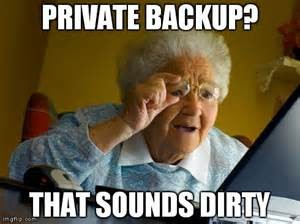
Imagine you and me sitting down and creating a method of mincing and reassembling vegetables that only we knew. One day you pulled a potato from a bag of other potatoes and chopped it according to our plan then passed it to someone else prior to me. After I made sure all the pieces were intact I reassembled the potato according to those plans.
Our friend in the middle took a look at the pieces and may have known it was a potato simply by the smell but had no way of discerning that potato from any other. Even though it was a potato, it may have been in an unusable form. It doesn’t become whole again until I get it in my hands.
I just oversimplified encryption by referencing a tuber. But data encryption is really all about taking usable discernible information and jumbling it so it isn’t usable to someone else. Encryption and decryption are really two processes created with the same protocol which allow data to move safely between points.
2016 is the year we’re going to hear all about encryption, I can almost guarantee. I was listening the radio last week and sure enough the host was questioning one of the candidates about data encryption. Unfortunately for me the candidate dodged the only question relating technology and politics.
Never mind a vegetable and think of your credit card or bank statement. Currently most of us log into a secure website to check our statements. Websites with HTTPS preceding the web address use what’s called a Secure Sockets Layer (SSL) to encrypt data between the financial institution and your computer. When communicating with a secure site all transmissions are garbled.
Windows 10 has several built in encryption utilities for home and small business users. Users have the ability to encrypt some files or an entire hard drive. Although it’s a safer alternative than not encrypting, choosing to do this may make the computer noticeably slower. A better alternative is to be selective about what gets encrypted.
I have a ton of family pictures and home movies that would be a waste of resources to encrypt. I can’t imagine they’d be that important to anyone else. Rather than obfuscate a bunch of data nobody cares about, pick and choose important files. On the other hand, financial statements and government paperwork are on the top of my list to encrypt.
Clearly one of the biggest risks of someone having our personal information is identity theft. Credit card statements and banking information left unprotected may also lead to thievery. A good rule of thumb is to question whether you would leave the paper version of the same information in plain view.
Encryption can (and has) been used against us. A couple years ago there was a virus that encrypted computer data. In order to recover the information computer owners were held hostage until they paid a several hundred dollar ransom. Because the data was encrypted at a very high level, non paying users were left with muddle.
As a gambling man my bet will be on the word “encryption” being used more than ever in 2016. I hope I didn’t lose too many of you with my potato example, but I’ve used it before and it seems to be fairly straight forward. Usually I lose people with my examples because they obfuscate the original idea, kind of like my own form of communication encryption.
(Jeromy Patriquin is the President of Laptop & Computer Repair, Inc. located at 509 Main St. in Gardner. You can call him at (978) 919-8059 or visit www.LocalComputerWiz.com.)
